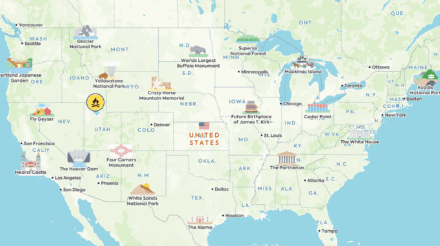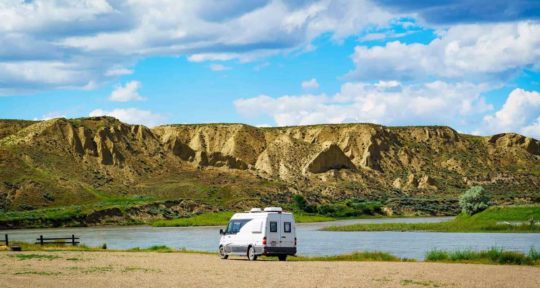I’ve lived full-time in my self-renovated 1979 Class C RV with my two dogs since the summer of 2020. Before deciding to move into my RV, I lived in an apartment in downtown Houston, Texas. I was working long hours while studying for the LSAT, and was left with little energy to spend doing the things that mattered to me the most, like playing with my dogs, enjoying my hobbies, and exploring the outdoors.
By the time my lease was set to expire, I’d convinced myself that I needed to re-prioritize my life. Owning a tiny home has always been a dream of mine, but I needed something more affordable. After a bit of research into low-cost, alternative living options, buying a used Class C RV seemed like the best idea. After a year of renovating and upgrades, my RV is officially the home of my dreams.
Since hitting the road full time, my dogs and I have done more than our fair share of lake swimming and spending time in nature. But we’ve also had our rig catch on fire, lost tires on the freeway due to shop negligence, and broken down more times than I care to count. As I’ve joined the Instagram vanlife community, I’ve become familiar with not only a diverse group of people but also some of the misconceptions about this lifestyle.
Here are eight vanlife myths, busted.
Myth #1: There’s no diversity in vanlife
As I first started getting serious about my transition into vanlife, I spent hours researching and consuming vanlife content. Unfortunately for me, the majority of the most visible faces in the vanlife community were—and continue to be—white and financially privileged.
10 tips for family vanlife with kids
The carefully-curated channels, displaying custom renovated luxury vans and ever-changing scenery gave me (and many others) an idea of what vanlife was supposed to be. But more than that, it created a picture of what vanlife looked like, and from where I sat—Black, queer, and searching for a fixer-upper of an RV—it was clear that it didn’t look a thing like me, or what I envisioned.
Since I’ve joined the vanlife community, I’ve found thousands of van dwellers with different backgrounds, ideas, and identities, all living their life to the fullest on the road. I attribute this change to movements like @vanlifepride and @diversify.vanlife on Instagram that champion and support a diverse vanlife community.
These groups are helping make the outdoors more inclusive
Together, these groups, and the individual BIPOC, LGBTQ+ vanlifers that share their journeys online, are actively working to disassemble this myth—and in my opinion, it seems to be working. While there are plenty of white, privileged vanlifers in the world, they’re not the only types of people living this lifestyle, and their experiences are not the only valid ones.
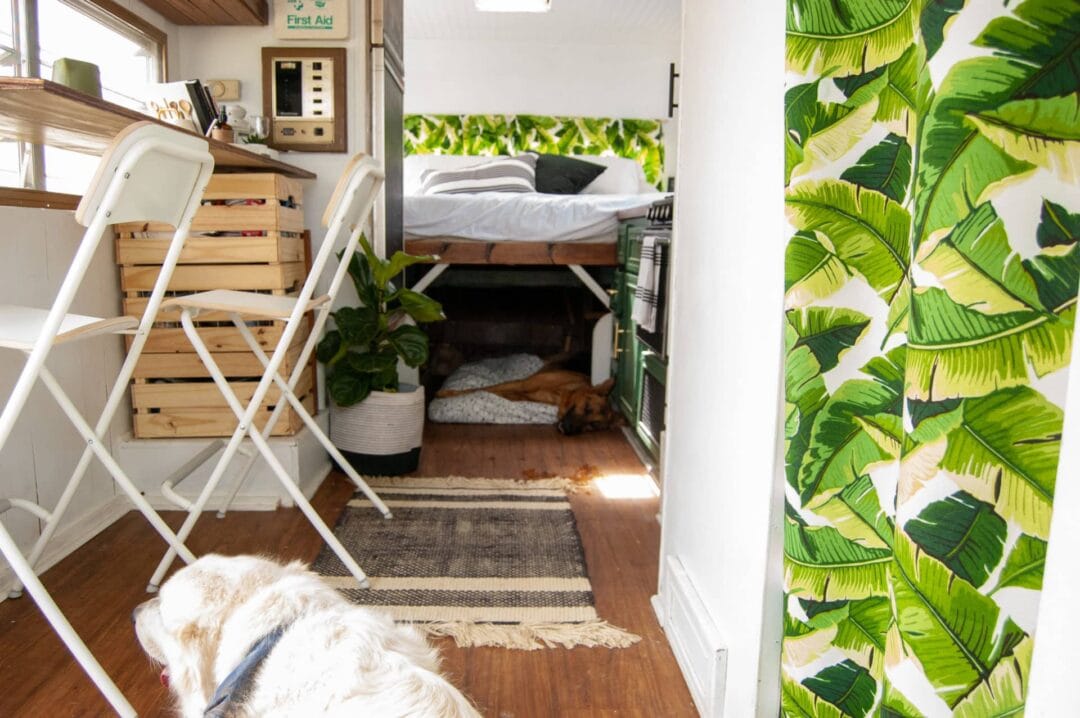
Myth #2: Building or renovating a rig is expensive
The beauty of this lifestyle is that, as the homeowner, you have control over all aspects of the final product—from design to completion. If you choose to pay a professional for a custom van build, expect to pay anywhere from $10,000 to $150,000 in addition to the purchase cost of your van.
But know that self-builds and renovations are increasingly popular as more people look to vanlife as a means of financial independence. There’s a growing wealth of knowledge online, most of it free, to help even the most inexperienced builders get their dream home up and rolling. It doesn’t have to break the bank.
Myth #3: Gorgeous views and luxury camping is the norm
If natural scenery and constant sunshine is the image of vanlife you’re after, you’re likely to be disappointed pretty quickly. A lot of full-time road living is sleeping in less than picturesque locations including gas station parking lots and rest stops. Stories of sleeping at mechanic shops are plentiful—after all, your house and your car are one and the same in this lifestyle.
Making the dream of vanlife a reality, one national park at a time
Of course, there will be breathtaking boondocking spots that you’ll never want to leave, but it takes serious research to find, vet, and locate them. The most epic camping locations are often first come, first served, and sometimes the weather has other plans and the access road is flooded or blocked. Ultimately, flexibility is the name of the game when it comes to life on the road and that includes where you spend the night.
Myth #4: Renovating a rig is impossible to do on your own
Building a van, renovating an RV, or tricking out a bus isn’t impossible to do on your own, but there is a learning curve. As more people with various levels of expertise participate in this lifestyle, the available information on conversions, renovations, and troubleshooting keeps growing. Really, if you have an afternoon or two you can learn how to do just about anything on your rig, knowing that it worked for someone else.
Consider bringing in a professional when it comes to propane, electricity, and final plumbing checks, especially if you’re renovating an older RV or another vehicle (like a bus) that might need to be registered as an RV. One of the best ways to ensure the integrity of your handy work is to make sure your engine doesn’t flood or burn up. This test does cost some money, but is invaluable for peace of mind. Some insurance providers may also offer lower rates for DIY builds with professionally inspected wiring, gas, and plumbing systems.
Myth #5: You need the perfect van to “vanlife”
The best thing about vanlife is that your “van” can be whatever you want it to be. A Sprinter van, an old cargo van, a school bus, an ambulance, even a Class C are all acceptable vehicles for vanlife. As I’ve gotten to know more of this community, the general consensus is that whatever vehicle gets you on the road and allows you to live the lifestyle you’re dreaming of is the perfect van for you.
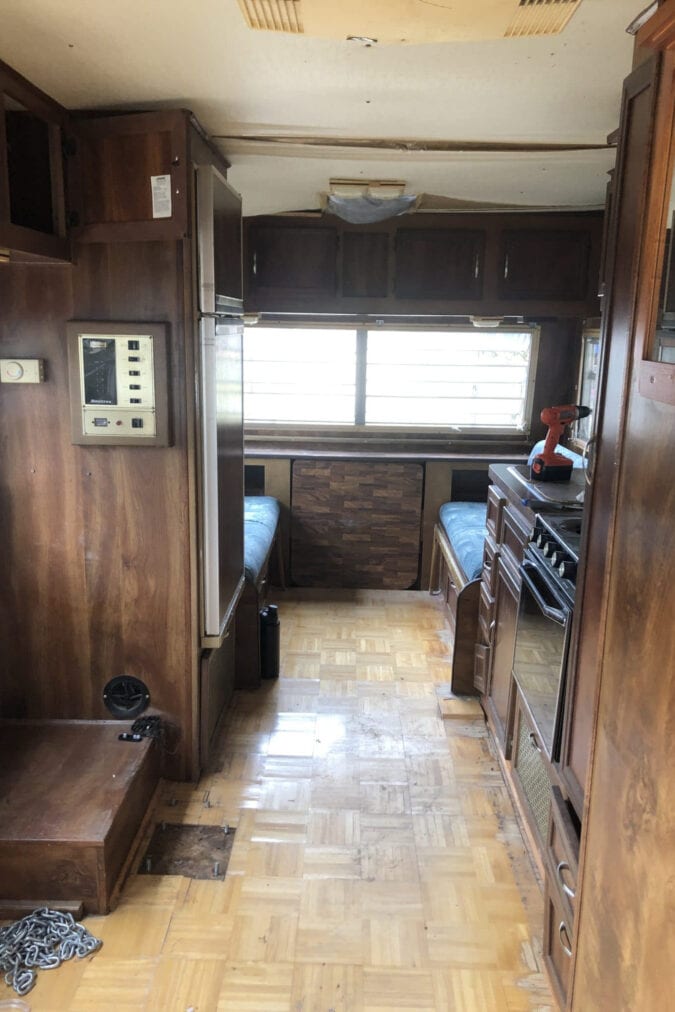
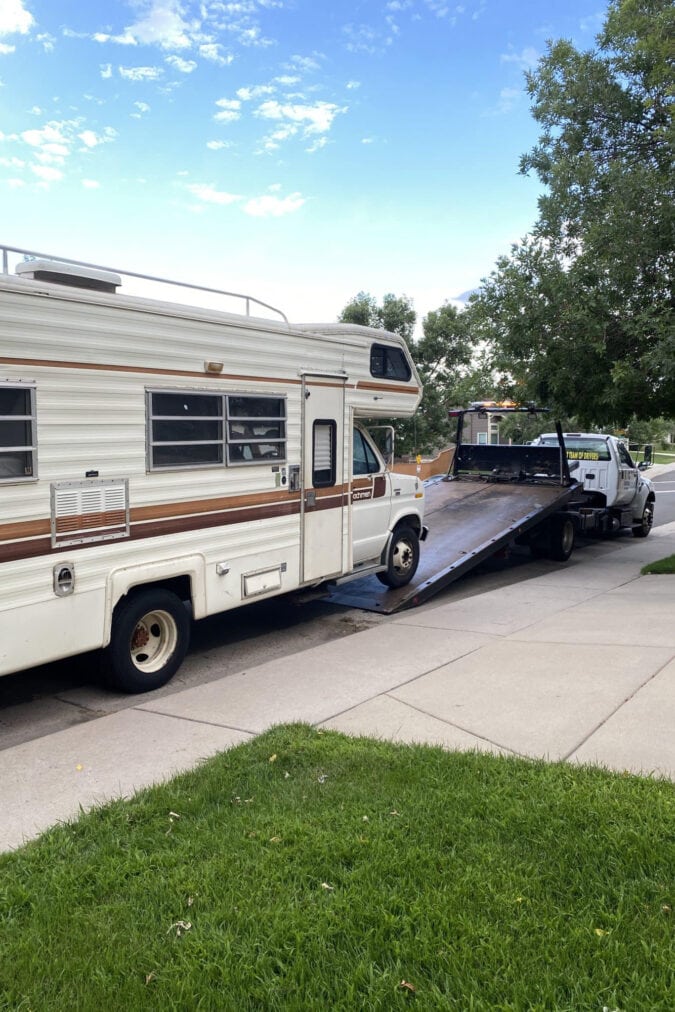
Myth #6: Living in a van is affordable and easy
While there are certainly times when living in a van can feel both easy and affordable, it’s not always the case. When I first looked at vanlife as an option for saving money, I assumed it would be significantly less expensive than paying rent and other monthly expenses—and in a lot of ways, I was right. Before vanlife, I was spending close to $2,000 per month on just rent and utilities.
This couple is 55,000 miles—and two years—into their vanlife journey
I now spend around $500 in gasoline and food per month, which are my two biggest expenditures. Other expenses—like pet costs, credit cards, insurance, and phone and internet service—combine to roughly another $650, meaning I now spend about half of my previous rent and utility expenses to live an entire life. It’s true that I make less money now since I’ve quit my corporate job, but I’m able to do so because I lowered my cost of living.
However, this was not always the case; the build and first month on the road were the most expensive things I’ve done so far. Trips to hardware stores throughout the build ranged from $100 to $300, and during the first month on the road, I had a $1,200 mechanical issue. Having emergency savings can help you be prepared when things go wrong, because on the road you have limited options, which often means higher prices.
What RVers and vanlifers need to know about Starlink
Accidents, breakdowns, and general mishaps are almost guaranteed in this lifestyle. Know that the first few weeks are generally the roughest. While it’s different for everyone, the learning curve on an entirely new lifestyle can be steep, but, like most things in life, it gets easier the longer you do it.
Myth #7: You shouldn’t vanlife with pets
I hear this myth from time to time, and it always makes me laugh. Living on the road can be a dream lifestyle for a pet—they get to be within 100 feet of their most loved person at all times and have the entire country as their backyard. The things my dogs have seen, done, and smelled rival any sticks-and-bricks life I could have dreamed of giving them.
Initially, I was worried that they might not like life on the road and had moments of doubt, wondering if moving into the van was selfish. But I quickly realized that my dogs love it just as much as I do. My Great Pyrenees didn’t love the new and suddenly unstructured life at first, but once we established a routine, he enjoys life in the RV more than he likes being parked.
Myth #8: Vanlife isn’t for me
A common fear people have is that they’re not adventurous enough, wealthy enough, smart enough, or handy enough for the vanlife lifestyle. And while I understand these apprehensions, vanlife can be an option for anyone who is committed to trying it out.
5 things I wish I knew before starting vanlife
If you’re on the fence about whether or not a life on the road is for you, ask yourself the following questions as you imagine your new life.
- Why do I want to do vanlife? If I hadn’t come across the lifestyle online, would I still be enthusiastic about moving into a tiny home on wheels that may or may not have a toilet?
- How long can I comfortably go without a shower?
- Am I prepared to cover unexpected costs like undetected water damage or surprise mechanical repairs?
- When traveling with pets, am I prepared to make changes to my travel plans based on their needs, like traveling to areas where the weather is most comfortable for them?
- Am I willing to take the time to learn how to build and renovate or will I pay to have things done quickly and professionally?
- Am I willing to extend myself the grace to mess up as I embark on this new journey?
- Am I comfortable with knowing that I will make mistakes both in the build and on the road?
- Am I prepared to tolerate an unstable transition period as I adjust to life on the road?
- Am I ready for my life to change in every single way?
- Am I prepared to gain an entirely new and at times overwhelming appreciation for everything this world has to offer, particularly the most simple things?
If you can honestly answer these questions and still find you want to live life on the road, or better yet, are excited about rising to the challenge—then vanlife might be just the thing for you.

